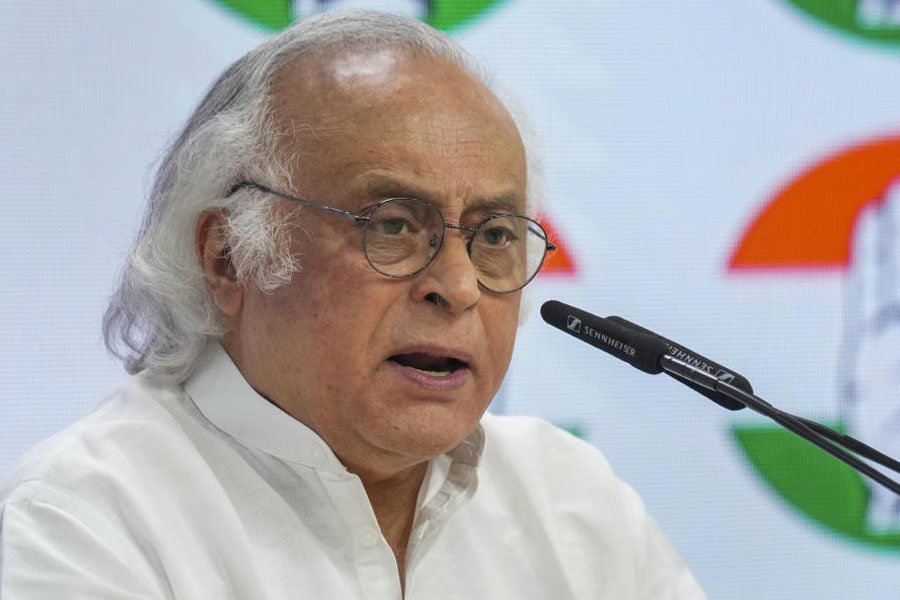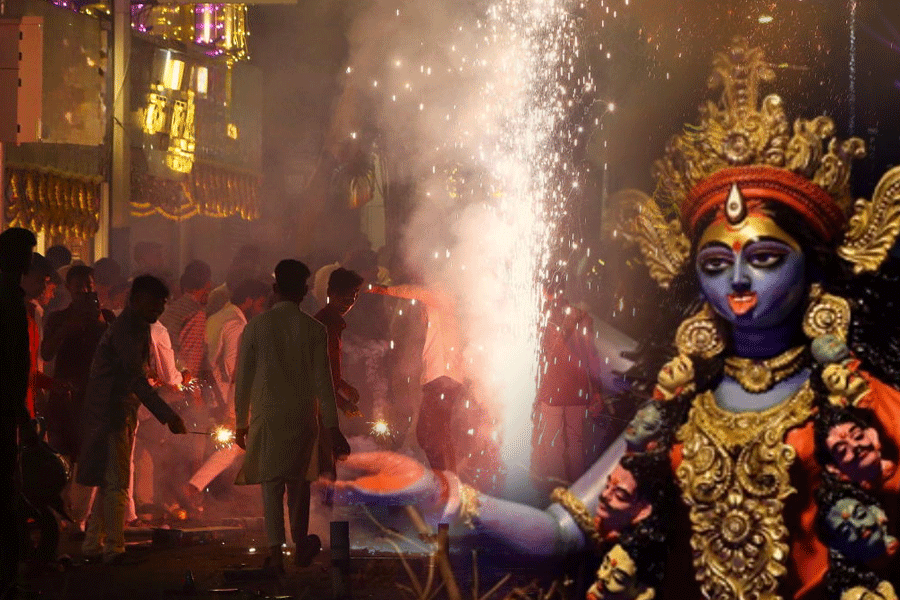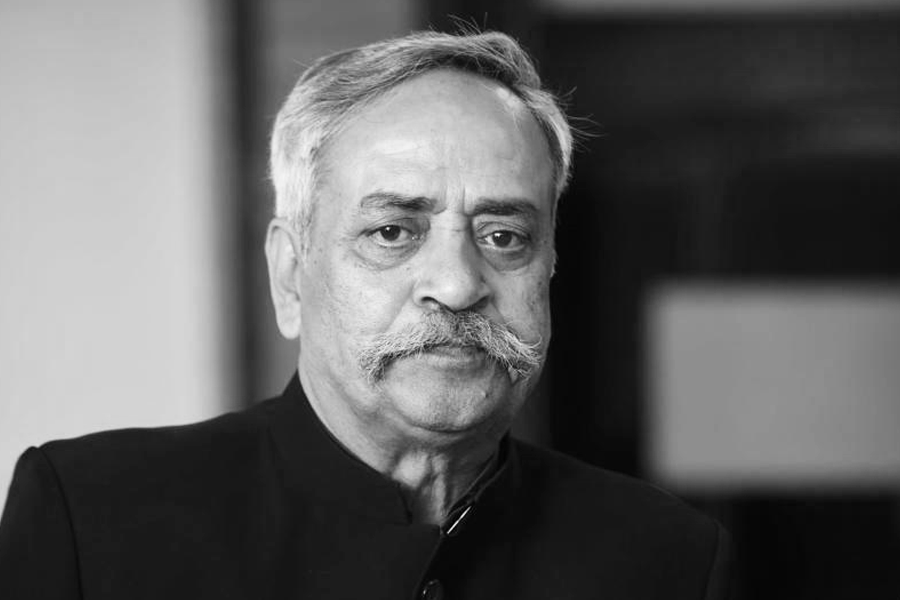 |
 |
 |
| (From top) Aparna Sen directs Suzanne Bernert and Konkona Sen Sharma in a scene in Iti Mrinalini; Claudia Ciesla and Damien Tridant |
The distance between the French city of Bordeaux and Bengal is substantial — but not for 35-year-old Damien Tridant. “When I came to India a couple of years ago, I wished to explore if the Indian film industry had any scope for French actors,” says Tridant, who loves Bengali culture “heart and soul”. He worked in several Bengali ad films and in popular ETV soap Sonar Harin. “I was learning Bangla and visited Santiniketan quite often. I worked with the soap for about 10 months but had to return to France for my projects on art therapy,” says Tridant.
Even though he is in his hometown at present, experimenting with theatre as a form of therapy, the actor is quite eager to return to Calcutta early next year. “Tollywood has been a learning experience. The language is still a barrier. But I’m working on it,” he asserts.
Tridant is no exception. Ferdous, whose Tollywood career took off with Basu Chatterjee’s Hothat Brishti in 1998, is perhaps the most famous foreigner in the Bengali film industry. “I wanted to work in Tollywood because it’s a bigger version of the film industry back home,” says the Bangladeshi actor who has made a comeback in Tollywood after a hiatus. “I never felt like an outsider here. Bangladeshi actor Anju Ghosh was already a name here when I debuted. Our success has certainly inspired a lot of Bangladeshi youngsters to find work here.”
Tollywood has been casting European actors, however, in more recent times. They are not de rigueur yet, but the industry seems to be attracting a stream of such professionals.
Bollywood, of course, has been hobnobbing with Hollywood A-listers in recent years. If Kambakkht Ishq had Sylvester Stallone and Denise Richards, Blue had Kylie Minogue swaying to Bhangra beats. It is also embracing the likes of Mexican model Barbara Mori (Kites), British model Florence Brudenell Bruce (Love Aaj Kal) and Sri Lankan beauty queen Jacqueline Fernandez (Aladdin). But Tollywood is not far behind — it boasts of rendezvous with German model Claudia Ciesla, Australian TV actress Emma Brown-Garrett, German stage actress Suzanne Bernert and Japanese stage actress Chigusa Takaku. While Ciesla and Brown-Garrett featured in out-and-out masala movies — Arin Paul’s 10:10 and Gaurab Pandey’s Shukno Lanka, respectively — Bernert features in Aparna Sen’s underproduction film and Takaku featured in her film, The Japanese Wife.
“We can’t deny that Bollywood has a wider canvas but if you are a regular on the international film festival circuit, you’ll find that many actors and filmmakers are quite conversant with Bengali cinema as well,” says Bappaditya Bandopadhyay. The filmmaker, whose Devaki and Kantatar won awards at several international film festivals, hired small-time British stage artiste Saith Stud to play the role of a trafficked east European woman in Kaal (2007). “In fact, a lot of such actors in the West are keen to work in Bengali movies. They have heard of Satyajit Ray and Ritwik Ghatak,” says Bandopadhyay.
Suzanne Bernert agrees. “Though I couldn’t work with Ray, I’m happy that I could do a film with Aparna Sen,” says the actress, who plays Konkona Sen Sharma’s friend in Iti Mrinalini.
Bernert’s repertoire includes Hindi soaps Kasauti Zindagi Ki and Astitva — Ek Prem Kahani as well as films Honeymoon Travels Private Limited and Anees Bazmee’s No Problem, which is currently being shot. “I had been working on the German stage for three years when I went to Dubai for a vacation. There I was approached for a role in a Hindi film, which wasn’t released in India. But I was swamped with offers from Bollywood, so I decided to shift base to this country,” says Bernert. “I’d certainly like to work in Tollywood again.”
Another German, Ciesla, too had “loads of fun” working in her Tollywood debut. “The pay was good and I was accommodated in a five-star hotel — the production team treated me like a queen!” she says.
Both Ciesla and Brown-Garrett had mainly decorative roles in their Bengali films. That is why many commercial Tollywood ventures also prefer “foreign dancers” (read: skimpily-clad white women) in item songs these days.
“The logic is simple. White dancers are a staple in Bollywood item numbers now. And Tollywood competes with Bollywood. We have to keep in mind the entertainment and glamour quotient to draw our audiences,” says Raj Chakraborty, whose second super-hit film Challenge boasted of a bevy of Russian dancers in the foot-tapping Bhaja gaurango number. “We can show some bold moves if we work with foreign dancers. They are less inhibited,” says Chakraborty candidly.
The other reason for their popularity is that Tollywood can now afford them. “Budgets for commercial films run into several crores. So as much as Rs 10 lakh can be invested in an item song,” says Bandopadhyay.
“The demand for foreign dancers is on the rise. But unlike Mumbai or Hyderabad, we don’t have agencies in Calcutta, which would ensure a steady supply,” says Pritam Chowdhury, production controller for Venkatesh Films, which produces Bengali films with the biggest budgets.
So how many foreigners work in the Bengali industry? That is difficult to say.
“Foreigners are generally used as props in Tollywood films — as dancers or extras. Most are selected from among the backpackers who lodge in Calcutta’s Sudder Street and are usually paid $100 for a day’s work,” says Arijit Datta, owner, Priya Entertainments. So there are no records. “Meaty roles for foreign nationals are still few and far between.”
The Japanese Wife, which will be releasing in Calcutta early next year, is one such. “It’s the adaptation of Kunal Basu’s novel set in India and Japan,” says B.R. Sharan, chief creative officer of Sa Re Ga Ma Films which has produced the film. “To get a Japanese actor for the role, we had to contact the country’s consulate in Mumbai. We held auditions in various parts of Japan and, finally, zeroed in on Chigasu.”
But, apparently, it’s not roses all the way for foreigners in Tollywood. Tridant had a trying time recovering his dues. “There was an inordinate delay. I think foreigners should be paid in advance so that they can live at least at the subsistence level while spending their visa time in India,” he says.
The situation is better now. The West Bengal Motion Pictures Artistes Forum has inked an agreement with producers’ associations according to which artistes have to be paid within 15 days after 11 days of work.
The pay may now be regular but it is still not on a par with industry standards. “There are many east European or Latin American girls who work for peanuts. Some get less than a mid-level Bengali actor,” says Bandopadhyay.
Nevertheless, mainstream filmmakers foresee a foreign influx in the near future. So, here’s a hand for all those lovely ladies who’ll light up our screens.










